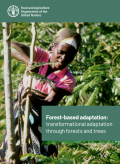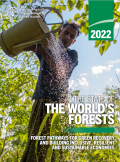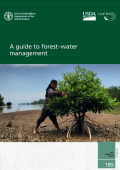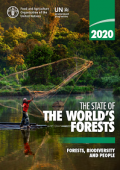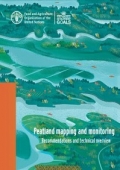FAO Publications
This FAO technical paper unpacks the concept of forest-based adaptation and describes policy spheres that could bolster the role of forests and trees in providing adaptation and resilience benefits. It introduces a set of ten principles for using forests and trees to promote transformational adaptation, which were developed with leading experts from the Center for International Forestry Research and World Agroforestry (CIFOR-ICRAF) and other partners. It describes the policy implications of each principle and draws on examples from diverse forest ecosystems and management practices to illustrate their application...
SOFO’s 2022 edition explores the potential of three forest pathways for achieving green recovery and tackling environmental crises, including climate change and biodiversity loss against the backdrop of the Glasgow Leaders’ Declaration on Forests and Land Use and the pledge of 140 countries to eliminate forest loss by 2030 and to support restoration and sustainable production and consumption.
A guide to forest–water management
September 2021
September 2021
The purpose of A Guide to Forest–Water Management is to improve the global information base on the protective functions of forests for soil and water. It reviews emerging techniques and methodologies, provides guidance and recommendations on how to manage forests for their water ecosystem services, and offers insights into the business and economic cases for managing forests for water ecosystem services.
SOFO 2020 reports recent major policy and institutional development, assess progress made in meeting global targets and goals, and highlights solutions that are critical in balancing conservation and sustainable use of forest biodiversity. The publication also provides many concrete examples of recent successful initiatives to manage, conserve and restore forest biodiversity aligned with its sustainable use.
The publication is the joint work of 35 expert authors from 14 countries presenting mapping methodologies to effectively monitoring peatland conditions. The report provides an overview of advantages and limitations of different monitoring approaches as a practical guide to facilitate decision-making ensuring that emissions and emission reductions are measurable, reportable and verifiable. Information on peatland conservation, restoration, rehabilitation and sustainable management is also presented in the publication.

